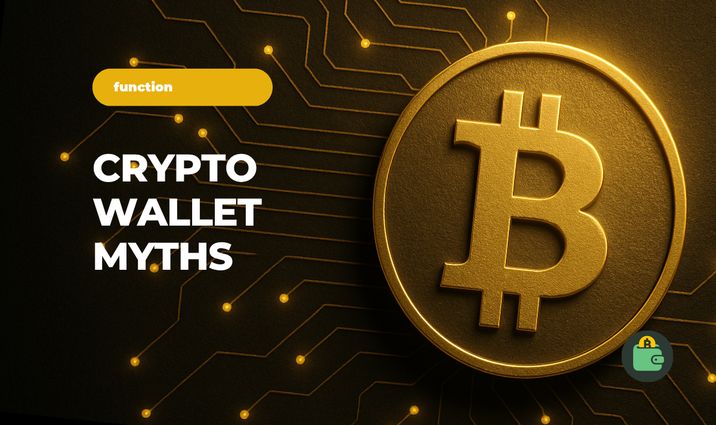Top 5 Myths About Crypto Wallets — Debunked by Experts

Many people think a cryptocurrency wallet is just a digital wallet for storing crypto. But that is only the tip of the iceberg. There are plenty of misconceptions about wallets in the Web3 world — and they can cost newcomers their security, or even all their funds.
In this article, we will break down the most common myths about crypto wallets and explain how they actually work — in simple language and with real examples.
“Cryptocurrency is stored in a wallet”
This is one of the most common myths in the crypto community. Many people imagine that cryptocurrency sits inside a wallet — just like cash. In reality, cryptocurrency always lives on the blockchain, which is a distributed database.
What the wallet actually does: it stores your private keys, which are needed to "sign" transactions and manage your funds.
If you lose your wallet but still have your seed phrase, you can restore access to your funds on another device. However, if you lose your private key, you will lose access to your funds permanently.
"Cold wallets are completely safe"
Recently, we have written about the new way to steal assets from Ledger — Cold wallets — also known as hardware wallets — are not connected to the Internet, which makes them much harder to hack. However, they are not immune to phishing attacks when connected to a PC, device counterfeiting, loss, or physical damage.
For example, if someone gives you a fake Ledger with pre-loaded keys, they can steal your cryptocurrency after the first deposit.
We recently wrote about a new method used to steal assets from Ledger wallets — Crypto Security Breach: Ledger Users Face Sophisticated Attack.
"The private key can be recovered"
This is a myth — and at the same time, it is true.
On the one hand, the inability to recover a private key is a core principle of decentralization. If you lose your private key or seed phrase, you lose access to your crypto forever. There is no "admin" you can contact for help.
For example, if you write your seed phrase on a piece of paper and accidentally throw it away, there is no way to get back into your wallet. However, if you use custodial wallets or exchanges, you may be able to restore access to your funds.
"You only need a wallet to store coins"
While a wallet can store assets, its capabilities go far beyond that. For example, Coin Wallet gives you access to a wide range of features:
- Staking (e.g., ETH)
- Buying and selling crypto, as well as sending, receiving, and swapping
- Access to Layer 2 networks (Arbitrum, Optimism, etc.)
"It's pointless to hack an empty wallet"
Hackers can still make use of an empty wallet. For example, they might create an “airdrop trap,” tricking the user into signing a malicious transaction while thinking they’ve received a gift.
Another tactic is to turn the wallet into a relay bot or use it in an attack on another user.
That is why it is important to keep a close eye on your accounts — and never follow suspicious links.
The Bottom Line
To stop believing myths about cryptocurrencies, reading articles is not enough — you need to understand how things work in practice.
Start by learning the difference between custodial and non-custodial wallets. Try creating and restoring a wallet with small amounts. And always store your private keys in a secure place — never in the cloud or as screenshots.
Be cautious when connecting your wallet to websites — phishing apps are among the biggest threats today. Do not rely on the interface alone; understand what is happening behind it: the blockchain, your keys, and smart contracts. In the Web3 world, your security depends on what you know — and the habits you build.